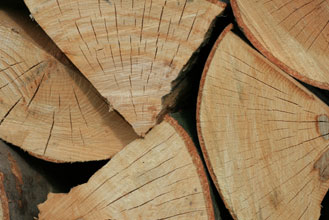Wood Boilers
What it is:
Central heating with wood. Some wood boilers are partially automated, particularly with respect to regulation of combustion air. They are not self-igniting, as you would find with pellet boilers and fossil fuel boilers and furnaces. Typically, wood is fed to the boiler once or twice a day during the heating season. Ideally, the boiler is fired very hot to get the best efficiency, minimizing unburned gasses, and soot and creosote buildup from cooler fires. Because the boiler is fired hot and relatively quickly, the heat is moved to a holding tank, where it is drawn off throughout the day as needed. Provisions must be made for a heat dump, for times when too much heat is produced for the system to safely carry.
Past, present, future:
Cordwood boilers have been in use for many years, and they will have a place in the heating market in the future as well. They make sense when cheap fuel is necessary, or where cordwood is the only possibility.
Advantages:
- Fuel is cheap
- Boiler does not take up living space
Disadvantages:
- Wood is a bulky fuel
- Wood boilers need to be manually fed once or twice a day
- These boilers can degrade more quickly than if not pressurized
- Large heat storage and heat dump provisions add to system set-up costs.
- Trees must be felled, cut up, transported, split, stacked, seasoned, and then loaded into the boiler daily.
Ecological Impacts:
No major impacts. CO2 neutral.
If you’re considering a wood boiler, why not look at wood pellet boilers, too? Heating with wood pellet boilers, such as our EcoBoiler, Effecta and Evoworld boilers are much more convenient than heating with wood. For more information, fill out our inquiry form.



